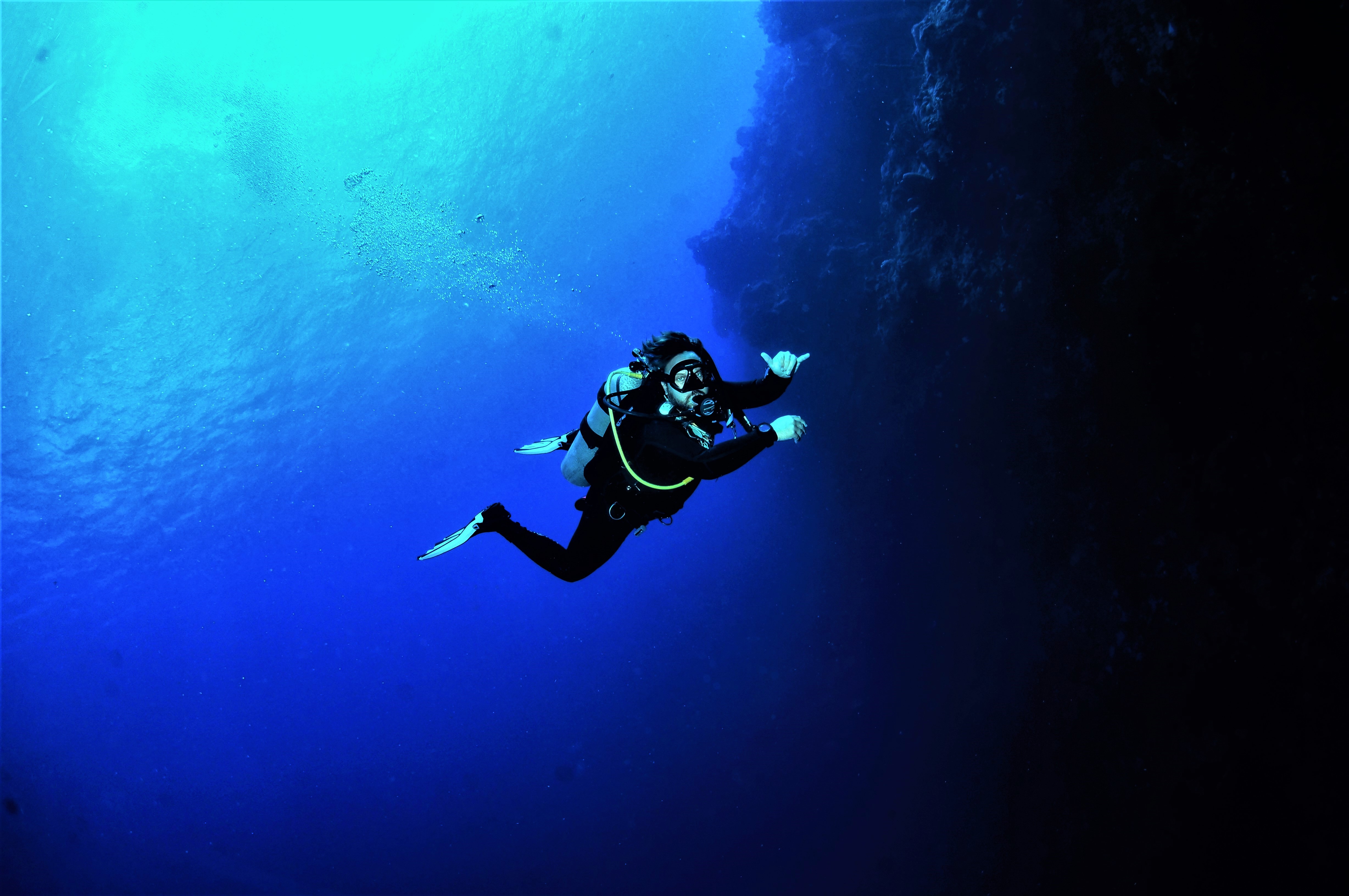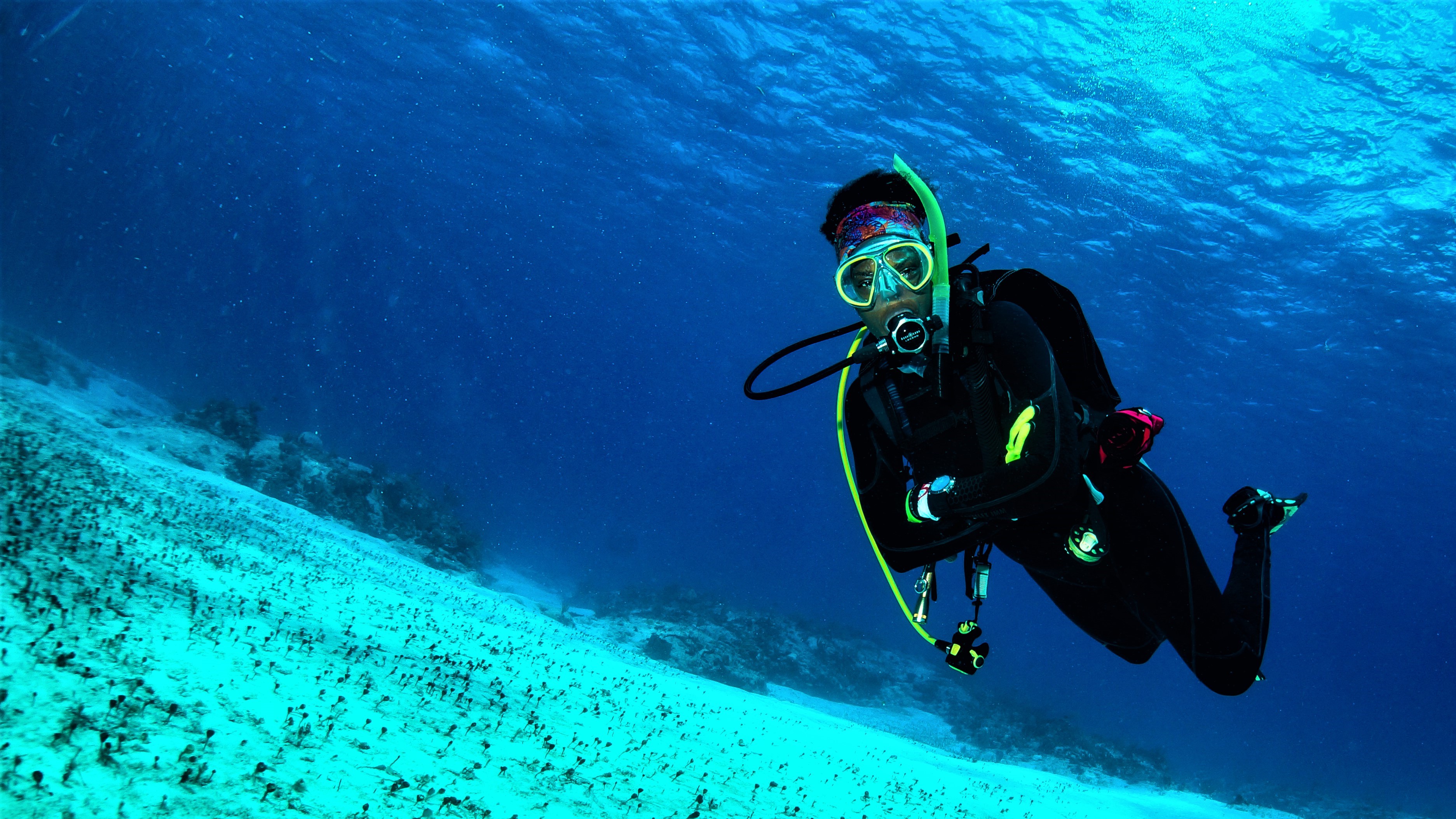By: Jeff
In order to fully enjoy your time underwater, you need to be comfortable. We all know this as divers, but figuring out exactly how to make that happen for us individually can be somewhat of a challenge.
Here at Blue Planet, I get asked on a weekly basis how to choose the correct exposure protection and what type of wetsuit a diver actually needs. As you can imagine, this isn’t always a simple answer, so I’ve distilled down what we know -- for your benefit.
Start with the Right Fit
Underwater comfort first starts with choosing the correct size. The best wetsuits available these days are made of extremely flexible materials. This means that the size you think you need may not actually be the best for you, so trying on a suit is a must! Getting a wetsuit based on a guess is going to lead to problems on your next trip.
Plus we have found that wetsuits from different manufacturers -- and sometimes even different lines from the same manufacturer -- fit very differently. This can work to your advantage once you find the brand that fits you perfectly and doesn’t gap in the armpits or at your lower back. But you have to try more than one to find that brand that fits you best.
3mm, 5mm, 7mm or what?!
Once you know your size, the thickness of the suit is what to look for next. Adding millimeters to your suit's thickness equates to greater warmth. While this scale is incredibly subjective, there are some general guidelines that work for most people:
Below 60 F (15 C)
In this temperature range, the majority of divers will choose to stay nice and toasty in a drysuit. The benefit of a drysuit is that you don’t get wet - hence the name! Layering underneath the drysuit is how you increase your warmth depending on the water temperature and your personal needs.
One of our favorite brands is Fourth Element (we’re a dealer too, so we can get anything for you) and they have put together a great Layering Guide to give you an idea of what it’s all about. If you already have a drysuit and are looking to upgrade your undergarments, their Layering Calculator is excellent! A quality hood and set of gloves (maybe try dry gloves?) are a must.
60 F - 70 F (15 C - 21 C)
So many dive sites around the world are within this temperature range. Cooler waters, while not always gracing the covers of the dive magazines, offer amazing and unique opportunities to see whole new, yet familiar looking, ecosystems in both fresh and saltwater. The 7 mm suit is going to be your best friend here.
Seven millimeter suits come in either traditional full length options, 2-piece farmer johns or complete full length suits with an integrated hood. Having an integrated hood will significantly cut down on water movement around your neck, which means you’ll be even warmer. My favorite 7 mm suit is from Henderson USA. Women’s Men’s.
70 F - 77 F (21 C - 25 C)
This is a common temperature range for local sites near us here at Blue Planet, as well as some of the bucket list dive sites around the world like The Galapagos or the Revillagigedo Archipelago (Socorro). A snug 5 mm suit will work wonders for you here.
My favorite suit is the Proteus II from Fourth Element. As you increase your skill set underwater, you will end up swimming less and moving more efficiently, thus decreasing the amount of heat you are producing. Sometimes, this means that even in the upper 70s it’s nice to have a 5 mm suit!
Above 77 F (25 C)
Most divers, including myself, consider this temperature range to be warm water and will use anything from a 3 mm suit to just a rashguard and bathing suit. While the water may feel really warm as soon as you jump in, it may seem to cool off the more time you spend underwater or the more dives you do. Full exposure protection is key in this temperature range since the sun, stinging cells in the water or an accidental bump into a ladder are never fun, but even less so without a wetsuit.

Still trying to decide?
It can be a tough decision. You’re never going to find one wetsuit that you can dive everywhere in all conditions, but start with where you dive most. Are most of your dives in the Caribbean? Start with a 3mm suit! Do you tend to get cold even in warm water? Then maybe you should consider a 5mm.
Don’t forget you can also get layering pieces to help when you need a bit more warmth. A hooded vest or long-sleeve shirt -- like these BARE Exowear garments -- are a great addition to your packing list when you know you’ll be diving multiple times over several days, like on a liveaboard.
And if you’re like most experienced divers, you will end up investing in several different wetsuits to ensure you’re warm and toasty wherever you end up diving.
Shop Small and Buy Local!
Your local dive shop should be your first stop when you’re ready to buy a wetsuit. They know their brands inside and out and have outfitted many divers in the suits you’re considering. They’ve likely dived those suits themselves! They will help you find the perfect suit and if they don’t have it, they’ll help you find one. We sell all of the brands mentioned above!

